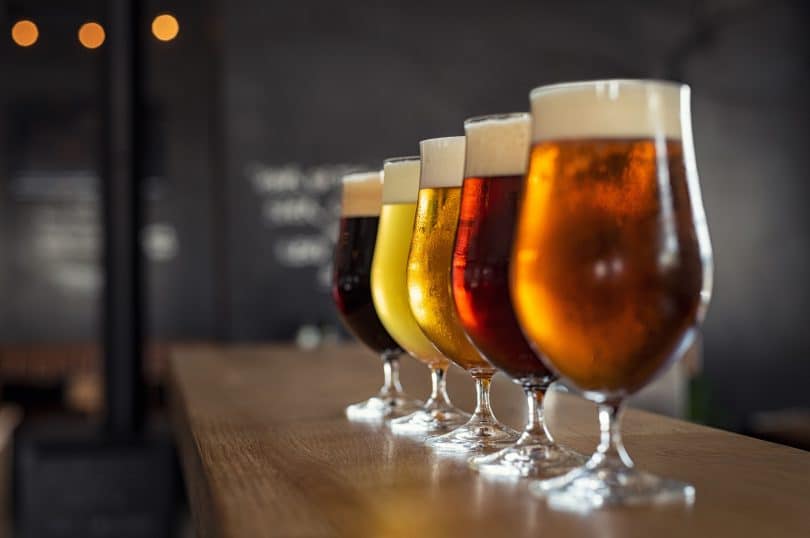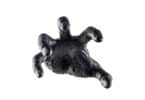The idea of non-alcoholic beer would have been a laughable concept a few decades ago but, nowadays, it’s almost fashionable.
The world of beverages has undergone a significant transformation in recent years, with an increasing emphasis on health and wellness. As a part of this trend, non-alcoholic beer has gained popularity as an alternative for those seeking the taste of beer without the alcohol content. But the question remains: does non-alcoholic beer actually contain no alcohol? Why do some beers say ‘0.0%’, whilst others say ‘0.5%’? Would enough 0.5% beers get me wasted? Well, In this article we’ll be delving into the brewing process, the ingredients, and the regulations that govern non-alcoholic beer. Let’s find out if non-alcoholic beer actually does contain alcohol.
The Rise of Non-Alcoholic Beer
Whilst non-alcoholic beers have been around for a while, their popularity and quality has certainly remained at a minimal level. Even when people decided to try sobriety, it would be rare that a ‘gross’ non-alc would have been an alternative option. However, cut to 2023, and the sales of 0% beers are at an all time high, with an 8% expected increase in 2024. The Guardian wrote this year:
“Tesco said sales of no- and low-alcohol beer were 25% higher in June than they were at the start of the year – showing that going booze-free is increasingly moving well beyond being just a “dry January” trend.”
There are many potential reasons why non-alc drinks are increasing in popularity, one obvious one being a general sway towards sobriety for newer generations. In fact, Generation Z are reported to drink 20% less than millennials, and are much more likely to try a sober lifestyle. This is due to an increase in awareness and an open mindedness that younger people seem to have to alternative lifestyles. If you want to learn more, click here.

Non-Alcoholic Beers
Wherever you go shopping for non-alcoholic beers, you can’t help but notice the varying percentages on the side of each can or bottle. Some say 0.0%, some say 0.4% and others say 0.5%. Then you have ‘low-alcoholic beers’, which can be anywhere from 2-3%. It can all get a little bit confusing. Suddenly you start wondering: if I had enough of these beers, would I eventually get pissed? This has worried me in the past, and I’ve even convinced myself that I’ve been hungover after having a few 0.5% cans. So if you’ve decided to go sober – for whatever reasons – are you safe to drink these non-alcs? Or should you stick to the monotonous lime and soda? Well, the key is in the brewing process. Let’s get scientific.
The Brewing Process of Alcoholic Beer
To understand whether non-alcoholic beer contains alcohol, it’s essential to grasp the basics of the brewing process. Traditional beer is typically made through the fermentation of sugars by yeast, resulting in alcohol and carbon dioxide. The primary ingredients in beer include water, malted barley (or other grains), hops, and yeast. This is an incredibly simplified version of the brewing process, if you want to learn more, feel free to do your own research.
Malted Barley
Malted barley serves as the source of fermentable sugars in beer. During the malting process, barley grains are germinated and then dried, activating enzymes that convert complex starches into sugars. This sugary solution, known as wort, is a crucial step in the beer-making process.
Hops
Hops, the flowers of the hop plant, contribute bitterness, flavour, and aroma to beer. They also possess natural preservative qualities. The specific hop varieties used can significantly influence the beer’s taste and aroma. Every single beer on the market contains hops.
Yeast
Yeast plays a pivotal role in the brewing process by consuming the sugars in the wort and producing alcohol and carbon dioxide. The type of yeast and the fermentation conditions contribute to the beer’s flavour profile and alcohol content. Without yeast, you do not have alcohol.
Fermentation
During fermentation, yeast converts the sugars in the wort into alcohol and carbon dioxide. The duration and temperature of fermentation influence the final beer’s flavour and alcohol content. In traditional beer, this is a key step in the creation of the alcoholic beverage.
The Brewing Process of Non-Alcoholic Beer
So what about non-alc? Well, non-alcoholic beer is crafted using a similar brewing process, with a crucial difference – the removal or reduction of alcohol content. There are two primary methods to produce non-alcoholic beer:
Fermentation
Like traditional beer, non-alcoholic beer begins with the fermentation of sugars, typically derived from malted barley. Yeast converts these sugars into alcohol and carbon dioxide. In non-alcoholic beer, however, measures are taken to limit this fermentation process to minimise alcohol production.
Dealcoholization
The primary method used to produce non-alcoholic beer involves brewing a regular beer and then removing or reducing the alcohol content. Techniques such as vacuum distillation, reverse osmosis, or heat are employed to achieve this. The goal is to extract or evaporate the alcohol while preserving the flavours and characteristics that define the beer.
Controlled Fermentation
In this method, brewers carefully control the fermentation process to limit the production of alcohol. By adjusting factors such as yeast type, fermentation time, and temperature, brewers can create a beer with minimal alcohol content.
Alcohol Content
So is the alcohol completely gone? Well, the answer is: not always. The term ‘non-alcoholic beer’ can be somewhat misleading, as these beverages do contain trace amounts of alcohol. Regulatory laws play a crucial role in establishing the threshold for what can be labelled as non-alcoholic.
USA
In the United States, the Alcohol and Tobacco Tax and Trade Bureau (TTB) defines non-alcoholic beer as a beverage containing 0.5% alcohol by volume (ABV) or less. This threshold is significantly lower than the alcohol content found in most traditional beers.
EU
The European Union aligns with the international standard set by the Codex Alimentarius, defining non-alcoholic beer as having an alcohol content of 0.5% ABV or lower. This standard ensures consistency in the labelling of non-alcoholic beverages globally.

The Last Trace of Alcohol
When examining the labelling of non-alcoholic beer, it’s essential to pay attention to the stated alcohol content. A non-alcoholic beer with 0.5% ABV, for example, contains 0.5% pure alcohol. While non-alcoholic beer is designed to have significantly lower alcohol content than traditional beer, it does contain trace amounts. The alcohol content in non-alcoholic beer can range from 0.0% (alcohol-free) to up to 0.5% ABV. As you’ve seen, these last remnants of alcohol are a natural byproduct of the fermentation process, even when rigorous measures are taken to minimise it. However, there is no reason to worry. Sansorium writes:
“0.5% ABV is legally considered non-alcoholic because our body metabolises that amount of alcohol faster than we can feel any effect.”
Therefore, whilst these beers may still contain some last remaining doses of alcohol – these will not have an effect. The body processes them quicker than they have the ability to have any effect. In fact, according to AlcoFree, Malt Vinegar and a glass of Orange Juice have a similar amount of alcohol content as most non-alcoholic beers. So if you’re worried about drinking non-alcs, then you should also be worried about OJ and vinegar.
0.0% vs 0.5%
So is there a big difference between the two? Should you be seeking the 0.0% beer’s over the 0.5% beer’s? Well, in all honesty, no. They both will leave you much the same – the only real difference is that 0.0% beers are more acceptable in certain cultures. If you want to know an estimate of how many 0.5 beers you would need to drink to even feel drunk, then read this from AlcoFree:
“How much is 0.5%? Well according to one estimate a 73kg healthy male… would need to drink 8 to 10 x 200 ml glasses of non-alcoholic (0.5%) wine or beer within 10-15 minutes to feel any impact on their cognitive ability.”
In essence, it’s practically impossible for an adult to get drunk on 0.5% beer. This is why they are legally known as non-alcoholic.
Conclusion
Whilst non-alcoholic beer may still contain remnants of alcohol, there is potentially the same amount in many household ingredients that you didn’t even know about. Alcohol is in a lot of drinks and foods, but never enough to get an individual drunk. Much is the same with non-alcoholic beer. Thus, next time you’re searching the shelves for non-alc beers, and looking at the varying percentages, don’t fret. Whichever choice you make, will still count as a sober one. As long as the beer is 0.5% or below.
Welcome cannabis aficionados! Thanks for making your way to Cannadelics.com, an independent news site going deep into the worlds of cannabis, psychedelics, and well beyond. We’re big on updates, so come by regularly. And get yourself signed up to the Cannadelics Weekly Newsletter, for the best in related product offerings, as well.









